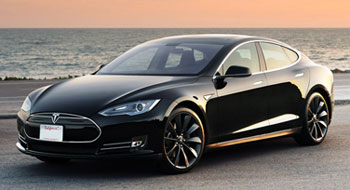
The third fire in five weeks in one of Tesla Motor’s Model S cars could prompt safety regulators to take a closer look at the electric vehicle.

The blaze occurred when a driver hit a trailer hitch on a highway near Murfreesboro, Tenn, according to press reports. The collision damaged the undercarriage and started the fire. The driver, who pulled the car to the side of the road, was uninjured.
“We have been in contact with the driver, who was not injured and believes the car saved his life,” Tesla spokesperson Patrick Jones told TechNewsWorld. “Our team is in Tennessee to learn more about what happened in the accident. We will provide more information when we’re able to do so.”
Shares Dip
Shares in entrepreneur Elon Musk’s car firm sank 7.5 percent to US$139.77 by market close Wednesday, following news of the latest fire. That came just after a 15 percent drop following third-quarter results and a fourth-quarter outlook that failed to excite investors. Shares dipped further on Friday, to a low as $132.32. However, the stock climbed to around $137.50 by afternoon.
It is not yet clear whether the National Highway Traffic Safety Administration will investigate the latest incident. The agency “will contact the local authorities who are looking into the incident to determine if there are vehicle safety implications that merit agency action,” spokesperson Karen Aldana told TechNewsWorld.
Debris Strikes Battery
In the first Model S fire incident, the car collided with a metal object in the middle of a road near Seattle, Wash., on Oct 1. The vehicle automatically alerted the driver to pull over and the blaze started after he was out of the car Tesla said. The battery pack is in the floor of the car, and the object directly struck one of the battery pack’s cells.
The NHTSA found no evidence the Seattle fire was caused by defects or that the vehicle violated any safety standards.
A couple of weeks later, a driver in Mexico reportedly hit a raised pedestrian crossing, which sent the car into the air and into a wall and tree. The driver was able to escape before the fire erupted.
Armor Plate
Tesla has a 6-millimeter thick armor plate on the bottom of the car, Musk pointed out when discussing the Seattle accident. Metal debris was able to puncture that plate and strike the battery pack.
“Because the battery for the Tesla runs underneath the entire car, it makes it more vulnerable to this kind of an accident. It can take damage from the front or rear of the car,” Rob Enderle, principal analyst at the Enderle Group, told TechNewsWorld.
“The safety aspect of the Tesla battery really is that steel containment that goes around it. So, if the cell is compromised or fails catastrophically so that it catches fire, the steel containment is supposed to contain the fire and keep it from the rest of the car. But if the containment is damaged, it can’t do the job.”
Lithium Risk
Lithium-ion batteries are widely used in cars, laptop computers, and other consumer electronic devices like smartphones, because of their energy density and light weight compared to other types of batteries.
However, the batteries are potential fire hazards. An iPhone caught fire, seemingly spontaneously, on a flight in 2011. In 2006, Dell recalled millions of batteries due to fire risk, after six incidents of their overheating and causing property damage.
Earlier this year, the Federal Aviation Administration ordered all U.S.-based airlines to ground their Boeing 787 aircraft pending safety modifications in the wake of a number of electrical fires. The agency required airlines to show the lithium-ion batteries were safe before flights resumed.
Weight Dilemma
“They might have to increase the strength of the containment so it’s harder to breach,” Enderle said. “They are already adding a lot of weight to it, though. It’s largely an aluminum car. The containment vessel is steel, which adds a significant amount of weight to the car. Adding more weight could certainly impact the performance and range of the vehicle.”
Still, electric car technology may be safer on the whole than traditional gas-powered engines.
“With gas cars, you can have unusual accidents that can result in fires. Gas tanks are often exposed at the rear of the car and being penetrated by something sharp often results in a gas leak and eventually a fire,” Enderle noted.
“Gas fires tend to go up much more spectacularly than batteries. I think [an electric car is] still largely safer than a gas car is, but it’s new. We focus on every single fire that occurs, where most of the gas car fires don’t even make the paper.”





















































